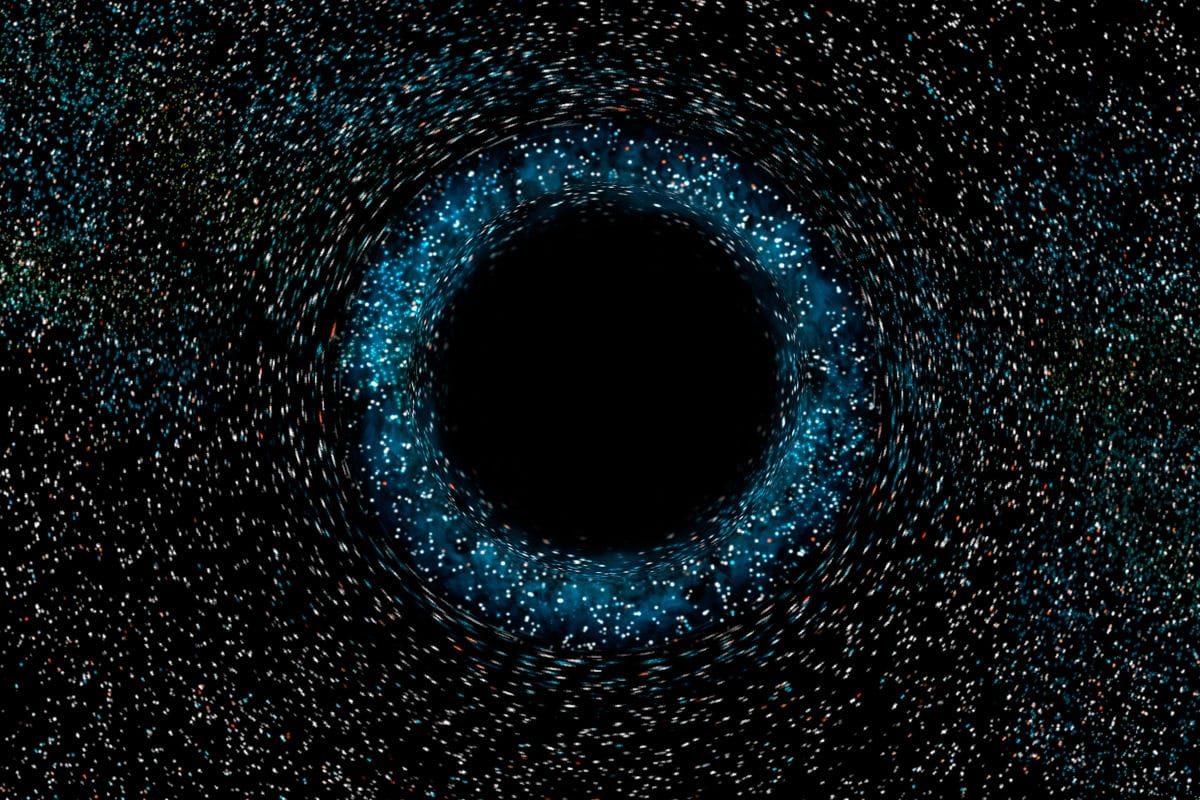

A black hole that had just formed from a collision of two smaller ones then shot into the universe at a speed of about 5 million kilometers per hour.
‘Ordinary’ black holes form when a massive star runs out of fuel and explodes as a supernova. But such a black hole cannot become infinitely heavy. According to astrophysicists, the upper limit is at a hole about 45 times as massive as our sun. However, there appear to be heavier holes. How did they come about, is the question? Possibly because black holes from stars merge into heavier holes, which in turn merge into even more massive holes, and so on.
But then those holes should not shoot away from their environment at a rapid pace as soon as they are formed. And that is exactly what a black hole observed at the beginning of 2020 does, write Vijay Varma from the Max Planck Institute for Gravitational Physics in Germany and colleagues in the scientific journal Physical Review Letters†
truncated motion
From the black hole in question, the detectors LIGO and Virgo picked up gravitational waves on January 29, 2020; vibrations in space-time that spread through the universe at the speed of light. Analyzes then showed that these gravitational waves indicate two merging black holes with what astronomers call high precession.
What does that mean? Imagine the two black holes as two rotating objects moving towards each other in one flat plane. Are the axes of rotation of both holes perpendicular to that plane? Then there is no precession. Do the axes point the other way? Then there is precession.
In such a merger, Varma explains by email, the centers of mass of the two black holes start to move up and down as the holes move towards each other. “When they merge, that up-and-down motion of the center of mass is truncated. This gives the resulting black hole a speed. In short, the following applies: the greater the precession, the stronger the up and down movement and the greater the speed.” In this case, that speed turned out to be a whopping 5.5 million kilometers per hour.
Animation of the amalgamation by Vijay Varma and Max Isi:
Hundreds of simulations
But how do you deduce from gravitational waves that there is a high precession, and that the resulting black hole has a certain speed? “We determine whether there is precession by comparing the observed signal to a gravitational wave predicted by a model,” Varma says. “We vary the masses and the directions of the axes of the black holes until we have found the most suitable wave.” Once you have determined in this way what kind of merging black holes you were dealing with before the collision, you can then use another model to determine the speed of the resulting hole after the collision – the kick velocity†
“You do need well-matched models for such procedures,” Varma continues. “For that you have to do simulations in which the equations of Einstein’s general theory of relativity are solved. Our models are based on hundreds of such simulations. As a result, they capture the underlying physics very well – which is crucial to properly determine the final speed.”
New particles
Varma and colleagues also calculated the probability that a black hole at that speed will remain part of the group of stars it originally belonged to. If it is located in a so-called globular cluster, then that chance is less than half a percent (ie: one in two hundred). The chance is greater in another type of star group – 7 percent – but there too the following applies: a black hole that speeds through the universe so quickly, probably leaves its neighbors behind. This reduces the chance that it will subsequently merge with another black hole from the region to form an even more massive black hole.
Now you can’t just draw general conclusions from a single observation, Varma says. “But if mergers like this are the norm, then the most massive black holes we’ve seen so far may not have formed from a successive series of mergers.” That would be interesting, because then there must be something else that causes such massive black holes to form. For example, some theorists think of new particleslike axions or dark photons.
wait
For now, it is mainly important to determine the speed of more black holes resulting from mergers. Unfortunately, the observations of gravitational waves so far will not be able to help with that. “We checked them all and only from this one we were able to get the speed,” Varma says. “So we will have to wait and see.”
Source material:
†Evidence of large recoil velocity from a black hole merger signal” – Physical Review Letters
†Gravitational waves gave a new black hole a high-speed ‘kick’– ScienceNews
Vijay Varma (Max Planck Institute for Gravitational Physics)
Image at the top of this article: ESA/NASA/Felix Mirabel (the French Atomic Energy Commission & the Institute for Astronomy and Space Physics/Conicet of Argentina)